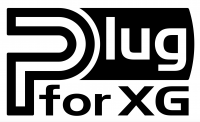XG Plug-in System: Difference between revisions
Jump to navigation
Jump to search
(mention rack variant of MU100) |
(link to PLG pages (yet to exist) and put “Yamaha” in their names like true products) |
||
| Line 7: | Line 7: | ||
Plug-in boards for the system included: | Plug-in boards for the system included: | ||
* PLG100-DX, an FM synthesis board with 912 presets and 16-note polyphony.<ref name=mu100-om-plg /> | * [[Yamaha PLG100-DX]], an FM synthesis board with 912 presets and 16-note polyphony.<ref name=mu100-om-plg /> | ||
* PLG100-VL, a Virtual Acoustic physical modelling synthesis board with 256 presets.<ref name=mu100-om-plg /> | * [[Yamaha PLG100-VL]], a Virtual Acoustic physical modelling synthesis board with 256 presets.<ref name=mu100-om-plg /> | ||
* PLG100-VH, a vocal harmony effects board.<ref name=mu100-om-plg /> | * [[Yamaha PLG100-VH]], a vocal harmony effects board.<ref name=mu100-om-plg /> | ||
(TODO: expand list with more boards) | (TODO: expand list with more boards) | ||
Revision as of 01:13, 22 September 2024
- This article is a stub. Please help DTM Wiki by expanding it.

The XG Plug-in System is a system developed by Yamaha for expanding Yamaha XG tone generators.[1] Yamaha produced a series of "plug-in boards" (expansion boards) for this system.[1] Unlike some other expansion board systems (e.g. the Roland SR-JV80 series), these boards do not just add new sounds, but contain an entire synthesis or effects engine on a board, thus potentially providing more polyphony or additional capabilities to the synths they are installed in.
The Yamaha MU100 and MU100R are the first modules in the Yamaha MU series to support the system.
Plug-in boards for the system included:
- Yamaha PLG100-DX, an FM synthesis board with 912 presets and 16-note polyphony.[1]
- Yamaha PLG100-VL, a Virtual Acoustic physical modelling synthesis board with 256 presets.[1]
- Yamaha PLG100-VH, a vocal harmony effects board.[1]
(TODO: expand list with more boards)
References
See also
- Roland VE series (similar concept from Roland)